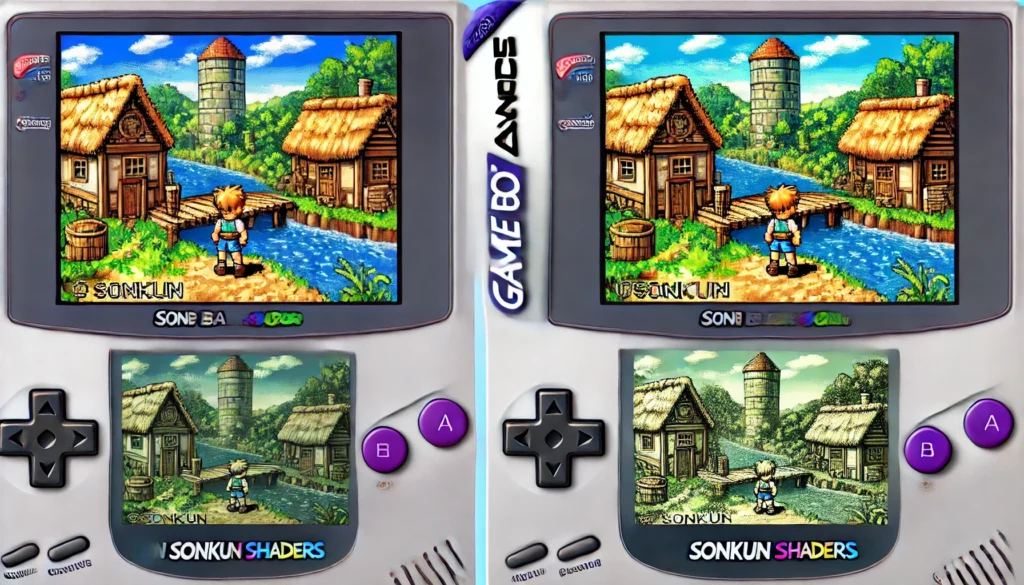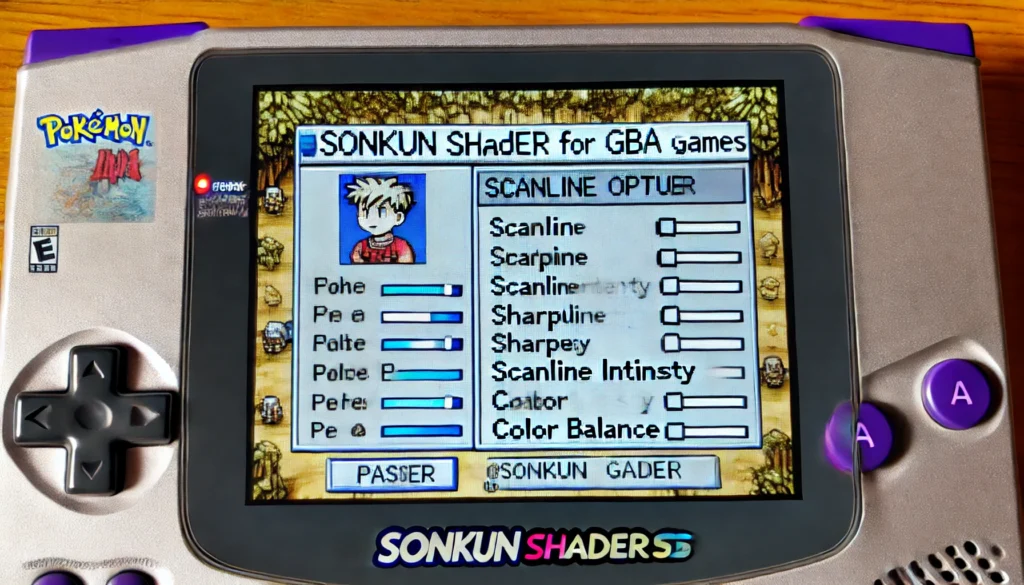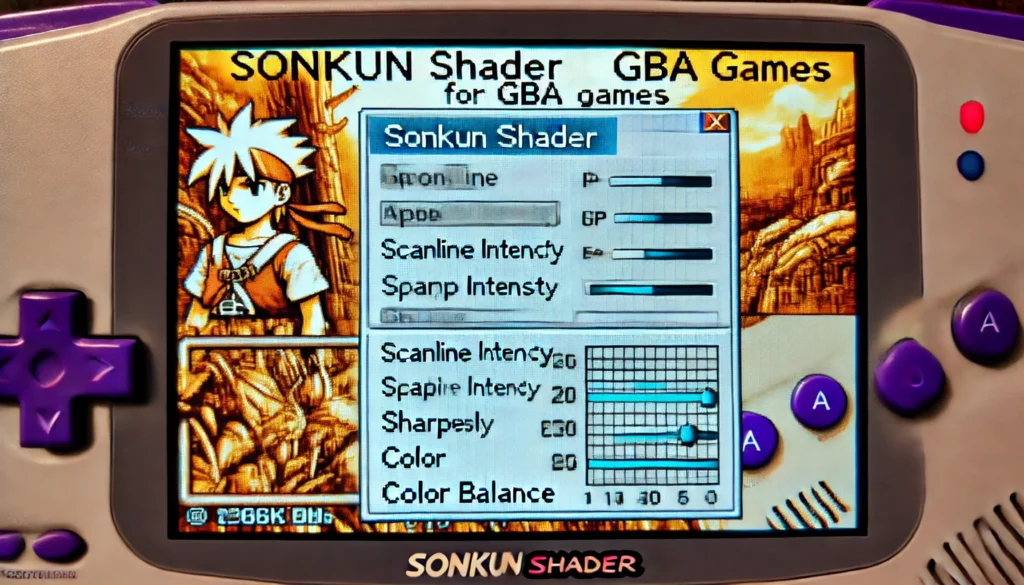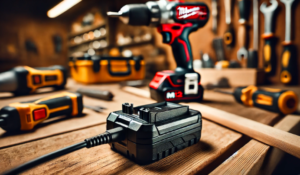Why Sonkun Shaders Make GBA Look Off & How to Fix It

Retro gaming enthusiasts often rely on shaders to recreate the nostalgic feel of classic consoles. Among these, Sonkun shaders stand out for their ability to emulate CRT displays. However, when applied to Game Boy Advance (GBA) games, many users report that Sonkun shaders make GBA look off. This guide delves deep into the reasons behind this issue, offering practical solutions, alternatives, and expert insights to enhance your emulation experience.
Understanding Sonkun Shaders
Features and Characteristics of Sonkun Shaders
Sonkun shaders are a collection of visual enhancement tools designed to simulate the appearance of CRT monitors. These shaders are widely appreciated for:
- Adding scanlines for a retro aesthetic.
- Softening harsh pixel edges.
- Enhancing color gradients.
While these features shine in console emulation, they often clash with the unique visual style of GBA games.
Compatibility with Different Consoles
Sonkun shaders work exceptionally well with systems like the SNES or Sega Genesis, which were originally displayed on CRT TVs. However, the GBA’s native hardware—a backlit LCD screen—differs significantly from CRT technology. This discrepancy can lead to visual anomalies when using Sonkun shaders.
The GBA Display: Technical Insights
GBA Display Specifications
The Game Boy Advance features a 240×160 resolution screen with a 15-bit color palette. Its pixel art is designed for clarity and vibrancy on a compact LCD. Unlike CRT displays, the GBA’s screen lacks the inherent scanlines and glow that CRT emulation replicates.
Visual Design Philosophy
GBA games are crafted to maximize readability and aesthetic appeal on a small, portable screen. This involves bold colors, sharp pixel art, and deliberate simplicity. Applying CRT shaders like Sonkun’s can distort these design elements, making the graphics appear blurred or overly processed.
How Sonkun Shaders Impact GBA Visuals
Over-Processing of Pixel Art
One major issue with using Sonkun shaders on GBA games is the over-smoothing of pixel art. GBA visuals rely on crisp edges to convey detail effectively. When Sonkun shaders add artificial blurring, the images can lose their intended sharpness.
Excessive Scanline Effects
Scanlines are a hallmark of CRT emulation, but their intensity can be overwhelming for GBA games. Instead of enhancing the visuals, scanlines can obscure details, making the games harder to enjoy.
Alterations in Color Representation
The GBA’s vibrant color palette often clashes with Sonkun shaders, which may introduce muted tones or excessive contrast. These alterations can detract from the original aesthetic of the games.
Introduction of Visual Artifacts
Visual artifacts like moiré patterns or unintended color shifts are common when using shaders not optimized for handheld consoles. These issues can make the GBA games look “off,” detracting from the gaming experience.
Solutions: Optimizing Shader Settings
Adjusting Sonkun Shader Parameters
To minimize the adverse effects of Sonkun shaders, tweak the following settings:
- Scanline Intensity: Reduce to maintain clarity.
- Color Balance: Adjust to match the GBA’s original palette.
- Sharpness: Increase slightly to preserve pixel definition.
Selecting Appropriate Presets
Explore presets specifically designed for handheld consoles. Some shader collections offer options tailored for the GBA, ensuring better compatibility.
Combining Shaders
For advanced users, combining Sonkun shaders with lightweight filters can yield balanced results. For example:
- Use a color correction shader alongside Sonkun to maintain vibrancy.
- Layer a light blur filter to complement scanlines without overprocessing.
Alternatives to Sonkun Shaders
Popular Shader Options for GBA
- mGBA Default Shaders: Designed with GBA visuals in mind.
- LCD Simulation Shader: Mimics the original handheld screen.
- Higan’s Pixel Shader: Retains pixel sharpness while adding subtle enhancements.
Comparison Table: Sonkun Shaders vs Alternatives
| Shader Name | Compatibility | Performance | Visual Output |
|---|---|---|---|
| Sonkun Shaders | Medium | High | Overprocessed |
| mGBA Default Shaders | High | Low | Balanced |
| LCD Simulation Shader | High | Medium | Authentic |
| Higan’s Pixel Shader | Medium | Medium | Crisp |
Best Practices for Authentic GBA Emulation
Achieving an authentic GBA look involves:
- Understanding Original Hardware: Study how GBA screens display colors and manage brightness.
- Balancing Enhancement and Authenticity: Avoid over-processing by prioritizing clarity and color accuracy.
- Engaging with the Community: Learn from other enthusiasts by participating in forums and discussions.
Conclusion On Why Sonkun Shaders Make GBA Look Off
Sonkun shaders are powerful tools, but they are not universally suited for all systems. When applied to GBA emulation, they can make visuals look “off” due to over-processing, scanline intensity, and color alterations. By understanding these issues and exploring solutions like optimized settings or alternative shaders, you can enjoy a more authentic gaming experience.
FAQs On Why Sonkun Shaders Make GBA Look Off
What are Sonkun shaders best used for?
Sonkun shaders are ideal for consoles originally displayed on CRT TVs, such as the SNES and Sega Genesis.
Why do GBA visuals differ from CRT consoles?
The GBA uses a backlit LCD screen, designed for portability, unlike CRT displays which are stationary and larger.
Can I turn off specific features of Sonkun shaders?
Yes, most emulator settings allow you to customize individual shader parameters like scanline intensity and blur effects.
Do alternative shaders impact emulator performance?
Performance varies. Lightweight shaders like LCD simulation are less demanding compared to Sonkun shaders.
Are there shaders specifically for retro handheld consoles?
Yes, options like mGBA Default Shaders and LCD Simulation Shaders are tailored for handheld emulation.
Can I create my own custom shaders for GBA emulation?
Yes, many emulators support custom shader creation. You can use shader programming languages like GLSL or HLSL to design shaders tailored to your preferences. Online tutorials and forums can help you get started with creating shaders optimized for the GBA.
What emulator settings work best with Sonkun shaders for GBA games?
Apart from tweaking the shader itself, adjusting emulator settings like resolution scaling, aspect ratio, and VSync can enhance the compatibility and output quality of Sonkun shaders when used for GBA games.
Do Sonkun shaders impact gameplay performance?
Depending on your system’s hardware, Sonkun shaders can be resource-intensive, leading to performance drops. Ensuring your system meets the emulator’s requirements and disabling unnecessary background processes can help maintain smooth gameplay.
Are there alternatives to shaders for improving GBA visuals?
Yes, alternatives like texture packs, resolution upscaling, and color correction tools can enhance GBA visuals without relying on shaders. These options are often less resource-heavy and maintain the game\u2019s original aesthetics.
How do I reset my emulator to default settings if shaders cause issues?
Most emulators have an option to reset settings to default. Look for a “Reset to Default” button in the settings menu or manually delete the emulator’s configuration file, which will force it to regenerate with default parameters upon restart.
Recommended Articles:
Unveiling Mathew Pomyanovskyy: A Visionary in Business Transformation
Guide to Thenewjobz.com: The Ultimate Job Portal for Career Success
Glass Blowing Cane Pickup Plate Pastorelli: A Comprehensive Guide
260221 Assy Cable Cartridge USB-C Gray – Ultimate Guide
Why Sonkun Shaders Make GBA Look Off & How to Fix It









